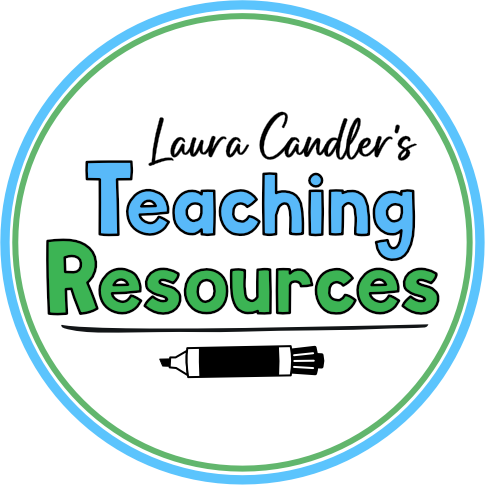I’v experimented with many different types of Literature Circles, and this page includes an overview of the models I’ve tried. I had some success with all of them, but some of these models are only effective with students who are already motivated to read and do homework. Read through the overviews at the top of the page, and scroll down to learn more about the methods that interest you.
Literature Circle Models Overview
- Classroom Book Clubs – My favorite method is a flexible approach to Literature Circles that does not require the use of extensive handouts and assignment booklets. I call it Classroom Book Clubs because it’s a more relaxed method that seems like a club and not a reading lesson. It’s also highly effective for improving reading skills as well as promoting the joy of reading and helping kids connect through literature.
- Mini Literature Circles – Want a quick and easy introduction to Literature Circles? This method can be used with the leveled readers that come with many reading series.
- Literature Circles with Roles – I personally don’t recommend this model, but I’ve left information about it on this page because many people have heard of it. I have not found it to be particularly effective with all types of learners. Read Harvey Daniel’s book Literature Circles: Voice and Choice in the Student Centered Classroom to learn about this model. You can find a simple version listed below on this page, but if the model appeals to you, you would enjoy Harvey Daniel’s book. Be aware that Harvey Daniels himself no longer advocates this extensive use of this model, but there are many other wonderful ideas in the book.
- Nonfiction Literature Circles – My newest addition to this collection of Literature Circle strategies is Nonfiction Literature Circles. Adding nonfiction has been one of the missing pieces of the reading puzzle for me!
- Literary Lunch Bunches – These are fun, informal Literature Circles that kids attend on a voluntary basis. The program is called Literary Lunch Bunch because you hold the meetings during lunch, in your classroom or another quiet area (such as outside at a picnic table).
Classroom Book Clubs
Watch this short video to how Classroom Book Clubs work!
After 15 years experimenting with Literature Circles in my classroom, I finally found an approach that students enjoy, an approach that’s free of cumbersome management systems. In the video below, I share 7 steps to Classroom Book Clubs success!
Mini Literature Circles using Leveled Readers
Are you required to use a basal reading program in your classroom? Many programs have leveled readers that can be used to introduce Literature Circles. Leveled readers are thin paperback stories or nonfiction selections, and they are written on a variety of reading levels. A Mini Literature Circle can be done in one or two days depending on the time allowed. Here’s how:
- Assign 3 or 4 students to a leveled reader based on their reading level. Alternatively, allow students to browse through the selection and choose the group they want to join. If you have 6 or 7 copies of each book, split the group in half for the Literature Circle discussion since the groups seem to work best with 3 or 4 students.
- Give class time for students to read the leveled reader alone, with a partner, or with audio support.
- Then provide a Journal Prompt such as the ones described in the section above.
- Allow class time for students to write a response, and then form discussion groups.
- Print out the Mini Literature Circle directions, and give to one person in each group who will serve as the discussion leader. Each person will need 2 popsicle sticks or craft sticks for the Talking Sticks discussion method used in this activity.
- As the students meet to discuss the book, circulate through the room to observe their discussions and interactions.
Literature Circles with Roles
Some students enjoy having roles within their Literature Circles, although many teachers find Literature Circles with roles to be less effective with students who aren’t already motivated to read. Personally, I found that assigning roles prevented deeper discussion of the book.
If you do want to try this method, download and print the Literature Circles Preparation Form. Give students a copy of the Literature Circle Role Descriptions. Make one Role Finder Dial per team. Assign each person on the team one role and have them prepare their assignment as described. On the day of the meeting, all students complete their worksheet during the meeting itself. For the next meeting, turn the dial one place to see the new role assignments. Students keep rotating roles until they finish their book.
Nonfiction Literature Circles
Eventually, I began to experiment with Literature Circles using nonfiction books, and at first I used the same basic format as my fiction circles. Then I realized that nonfiction books are different and the meeting structure could benefit from some tweaking.
First, I developed some Nonfiction Response Questions for their Reading Response Logs. Then I decided to allow students to read together every day since the text is generally more difficult for them. They don’t do well with reading on their own when the vocabulary is so challenging. They also seem to like to talk about all the new things they are learning. So now we have what we call “reading days” and what we call “meeting days.” On the reading days they simply read together and take notes on what they are reading. They may stop and discuss the material, but they shouldn’t get bogged down for too long.
When they finish the book, we schedule a Meeting Day. Prior to the meeting, they have to write a response in their Reading Logs. On the day of the meeting they read their responses and discuss what they thought of the book. I try to meet with each group for a few minutes, and I generally have a set of discussion cards prepared that they can talk over together.
Before the meeting, I prepare a different set of question cards for each book, and the questions guide them through some of the more important points of the book. (See sample – Whales and Dolphins). Finally, they take their computer test on the book and complete the Nonfiction Reflection Form. Here’s a blank Discussion Card Template you can use if you would like to make your own cards for reading discussions.


